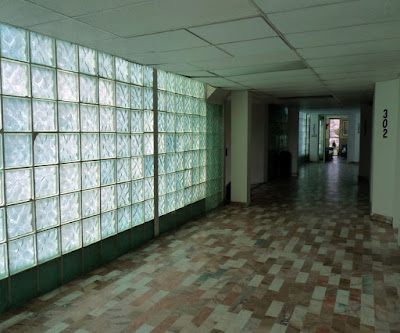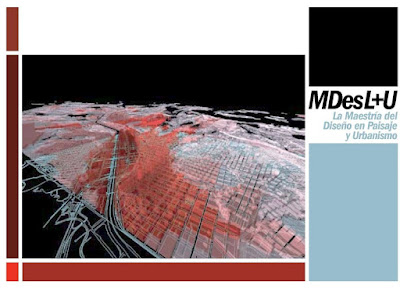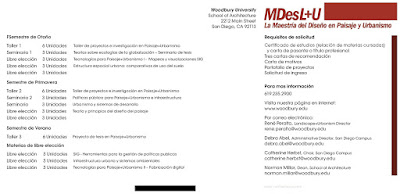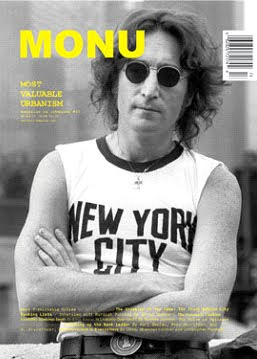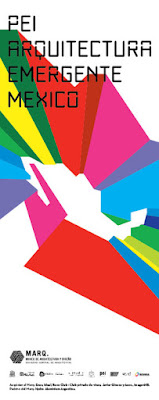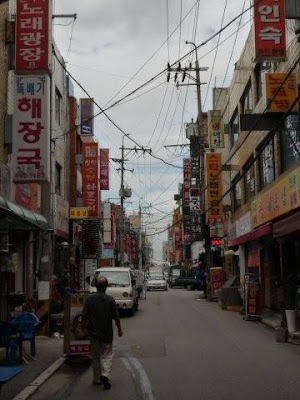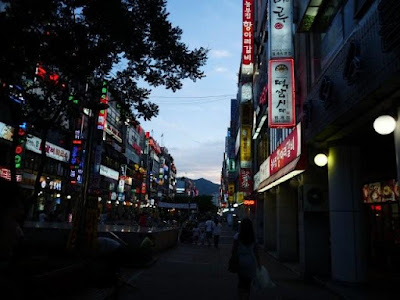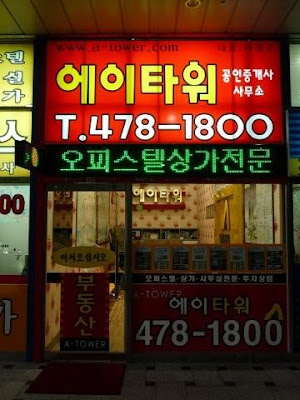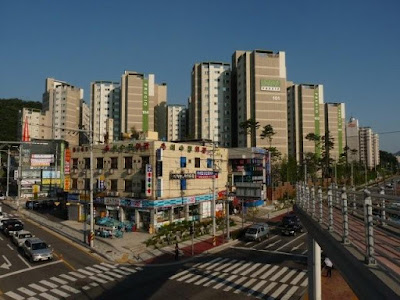Riedel Medical Center: A Blueprint of Logic and Faith
All buildings begin as an idea. Yet, not all have an aura to develop into a story of their own, a story uninhibited from the architect’s will and its client’s desires. Like the houses we dwell in, some buildings become our first universe, as Bachelard mentions, “a real cosmos in every sense of the word.” Today to be modern is to inhabit a commonality of spaces that tend to obliterate our desire to create that private and intimate universe that stays with us, inscribed in countless personal stories. As we move from being born in a hut and dying in a house, (our personal space), to being born in the clinic and dying in the hospital, (the generic space of our super modernity), few buildings tend to retain their literary sense and inspire a virtual travel through its space and materiality. There is a building in the city of Tijuana that conceals the desires of three personalities that through their will and faith construct the blueprint of not only a physical space but create a universe of emotions that even today resonates as you walk through its doors. This is the story of a doctor, a nun and three young architects that gave birth to architecture.
Tijuana’s temporary monument

Projected by a simple parti in plan and section and organized through structural and material logic by its architects, the Riedel Medical Building (known today as Del Prado Medical Center) in Tijuana, became transformed by spiritual will and a desire to create a state of the art cardiology center, open to all despite their economic background and who might need specialized care. A building that today has become one of the leading health centers in the city yet camouflaged by the rampant urbanization of the city and obscured by a more recent and controversial addition to its principal façade. The creation of the medical center in 1963 was the effort of Maria Luisa Riedel Betancourt, a tijuanense from a prominent family who wished for a small private 2 story hospital in what was considered the outskirts of the city near the Agua Caliente racetrack and lonesome tall silos of the local flour company, El Rosal. By the 1970’s the hospital became well known around the region for its outstanding medical care, Riedel Betancourt decided to expand the facilities and build a center with medical offices for the doctors who practiced in the hospital. For the design of the new wing she gave the task to a member of her family, Livio Santini, a young architect who formed the first generation of architects that studied in Los Angeles at the newly created Southern California Institute of Architecture (SCI-Arc). Santini invited Michael Rotondi, who also formed part of that first generation at SCI-Arc, and Thom Mayne, principal of the firm Morphosis who was also instrumental in forming the school. The three young architects, who were in their late 20’s and early 30’s, took on the task of designing the medical center in a city that was to them a real frontier and in which they saw an optimism for the role of new architecture. During the late 70’s Tijuana was going through radical urban changes, a new downtown was being built and the manufacturing industry was well into becoming the major economic sector of the city. Santini and Rotondi joined Thom Mayne and his firm Morphosis to design and build the commission.
Morphosis was then a young firm creating an oeuvre based on experimentation via competitions and small commissions, their design process was known for its provocative drawings and miniscule detailed models that launched them as an emergent practice in the architecture field. In 1977, the firm entered the design of the medical center to the 24th Annual Progressive Architecture Awards and was awarded a citation for the building. The jury was comprised of distinguished international architects who hailed the design for its elegance, articulation of spaces and its sensitivity. One of the jurors, John Dinkeloo saw it as a futuristic design and mentioned, “It ll never be built. It will take at least 20 years”. Yet, the architects had the right hunch and Tijuana proved to be a real frontier for experimentation and the building began construction 3 years later in 1980. It’s a simple building separated into three functional areas and four floors above ground, the building is orientated west and sheathed in green glass block to minimize solar penetration. The young architects where influenced by two of their heroes for the design strategy, the British architect James Sterling and Finnish architect Alvar Aalto.
Constructing an elegantly designed building in Tijuana had its challenges for the young firm. Lack of construction industry standards and unenforced health and safety codes during the construction where part of the issues that came with the liberty they enjoyed as designers to build one of their first award winning designs. Using local contractors and builders and for the most part all materials from Tijuana, except for some specialty hardware from the U.S., the building was completed in 1983. After the completion of the new wing, the medical center continued to be a premiere clinic in the region and years later it had to expand with another building that would be the most controversial piece added to the Morphosis design.
Coincidence became Devine Providence
By the 1980’s one of Maria Luisa Riedel Betancourt’s daughters, Patricia Aubanel had become a cardiologist and returned from the United States seeking to work again in her native Tijuana. Dr. Aubanel had a personal desire to bring modern cardiology back to her country. After studying at Boston University, University of Massachusetts and Harvard and specializing in interventional cardiology, Dr. Aubanel found it difficult to practice her specialty in her home town due to the lack of necessary resources to do so and began to work in San Diego for Scripps Clinic in La Jolla., Mexico had been a pioneer in cardiology research lead by Dr. Ignacio Chavez (1944-1961) at the National Cardiology Institute in Mexico City a building with its own architectural merit designed by one of Mexico’s leading modern architects, José Villagrán García. In 1991 she embarked on a personal and professional journey that would lead her back to what she most desired, a specialized cardiology center in Tijuana. During this time she met a catholic nun by the name of Agnes Gonxha Bojaxhiu, who would become her spiritual guide. She was known to the rest of the world as Mother Teresa of Calcutta. In Tijuana, Mother Teresa had founded three homes for the poor with her Missionaries of Charity organization and during 1991 had returned to oversee the charity’s work with the city’s poor and elderly. Dr. Aubanel was still working for Scripps Clinic and was making frequent trips to Tijuana where she cared for patients at the medical center. It was a late December morning of the same year when the doctor received a call from Tijuana’s Bishop Emilio Carlos Berlie Belauzarán, telling her that a special friend visiting Tijuana and who he had great respect for, was sick and needed someone with her specialty to evaluate her condition. Understanding the enormous responsibility at hand the Bishop made it clear that he would respect the doctor’s decision if she refused to evaluate her after knowing who the particular acquaintance was. When she found out it concerned Mother Teresa, it took her a couple of hours to contemplate a reply to the bishop’s plea. Eventually the doctor decided to go see the nun. After a brief examination Dr. Aubanel realized the severity of her condition, one that could only be resolved and attended by a handful of people in the world and to her realization she was one of the chosen ones. Coincidence became Devine Providence.
Mother Teresa was immediately admitted to the Del Prado Medical Center but her critical condition required her to go across the border to Scripps Clinic for heart surgery, a trip that she refused to make. “I won’t be attended in a hospital that cares for the rich and privileged”, she told Dr. Aubanel. If the poor could not have this type of medical care, neither would she. Mother Teresa asked to be operated at the medical center in Tijuana, but the center did not have the means to undergo such treatment. The doctor attempted to convince her by explaining that her vows of poverty would not be affected, but on the contrary, it was because of lifelong dedication to her work, she needed to be treated at any cost and in any place, in order to continue her mission. “There must be a reason why I am here to help you; I am one of very few experts in the world that can treat your condition. I’ve never known how to listen to God, but this time I feel a calling” the doctor claimed. After a few days of trying to convince her, Mother Teresa still refused and told Dr. Aubanel that God was her doctor and he would decide her fate. She immediately stops her medical treatment and the following day leaves Tijuana and heads north to Los Angeles to continue with her work. On the third day in Los Angeles Mother Teresa falls ill again and Dr. Aubanel gets a call from her staff asking for her advice. The doctor explains to them that in her condition she needs to be admitted into a local hospital as soon as possible. Mother Teresa once again refuses and prefers to be attended in Tijuana. According to the Dr. Aubanel, she had a special place in her heart for Tijuana, she felt closer to God there. She arrives in Tijuana the next morning. The doctor, ready to attend her, is made to wait while she visits the Christmas festivities at her houses in Tijuana and it’s not until she returns, at 10 pm, that she allows to be treated. She agrees to go to the hospital, but only until the day after Christmas.
She finally gives in and on December 26 is taken across the border to Scripps Clinic under the condition she would not be accepted as Mother Teresa but by her real name Agnes Bojaxhiu. During that time Dr. Aubanel was treating another patient that also made the journey north to San Diego, the mayor of Tijuana who had suffered a stroke. After laboratory test, Dr. Aubanel found out that Mother Teresa had five obstructed arteries and decided to operate all her vessels with angioplasty and the remaining one with an experimental procedure by placing a stent in the artery. The procedure was a success yet the stent procedure was still in clinical trials and had to have FDA approval to be used on Mother Teresa. After her successful surgery it became known through the medical community as the “Holy” stent.
Building Faith
The heroic effort made to save Mother Teresa’s life was a profound experience for Dr. Aubanel that would also affect the famous building Morphosis had designed in Tijuana in the early 1980’s. After the operation, Mother Teresa entrusted the doctor with two tasks; one to create mobile health clinics to serve Tijuana’s underprivileged population who did not have access to medical services. Second, if she really wished to bring back to Mexico modern heart medicine, she had to build a cardiovascular center that would serve the whole community, rich and poor, and would be built on the grounds of the medical center her mother Maria Luisa Riedel Betancourt had built in Tijuana.
The doctor was now on a journey to raise funds for the center that Mother Teresa entrusted her to build. She saved the money earned from attending her patients at the medical center but the process was slow. Every time she flew around world to see the nun for her checkup she would have to reveal to her the arduous task of raising money. After every visit the nun would ask if she had begun to build the center and the doctor would answer hesitantly, “I still don’t have enough funds.” Mother Teresa would reply, “You don’t need money, all you need is faith.”
Mother Teresa passed away in 1997 and Dr. Aubanel would not wait any longer. She decided to begin with what funds she had at that moment. For a last blessing she decides to visit the nun’s grave in Calcutta and asks permission to visit the burial site. As she visits the site she felt a deep spiritual approval to begin the task. Before leaving the doctor asks for one more request to the Council of the Missionaries of Charity at the convent, she wanted to name the center after Mother Teresa. The nuns approved the request unanimously and today it is the only medical institution in the world that bears her name, Institute of Cardiovascular Sciences Mother Teresa. It took Dr. Aubanel 7 years to finally trust her faith and begin the project.
She hired an unknown architect to design the building on what was part of the front plaza adjacent to the entrance of the medical center. She began the work without hesitation and without consulting or intending to work in any way with Morphosis. Her claim was twofold; she was entrusted to begin the project by one of the most devout spiritual leaders in the world and due to Morphosi’s success in the architectural field she thought they would be beyond her economic possibilities. By this time the firm had matured and was becoming one of the most important practices in the Unites States and abroad, winning commissions and awards for high profile projects. Another concern she had (and one that is valid yet very debatable) is that according to Mother Teresa everything the doctor did under her name and blessing had to be humble and unpretentious, Dr. Aubanel thought that by giving the project to a local architect she would be true to this ideal. At the end the new wing designed and built was a bland white stucco box with a pitched roof attached to the original Morphosis building. “A crime to the building designed by Livio, Michael and Thom, she explains, but true to the needs of the new institute.”
Michael Rotondi’s thinks the doctor’s preoccupation plausible yet he felt that he would of considered working pro bono on the project. “If the project is important enough then we always find a way to make it happen.” There is always an interesting dilemma in the idea that the success of an architect hinders the possibility of obtaining certain commissions. But according to Rotondi value is not geographic but qualitative and the relationship between local and simplicity are not always mutual conditions. The architect also felt that her speculation regarding the firm’s success was just a way to validate a predetermined decision. “Dr. Aubanel had other plans and commitments I understand, but it’s too bad we never spoke. At least it would have dispelled her preconceptions.”
Glass chimera
If you go and visit the building today you can walk up the marble stairs to the 4th floor and see its metal structure intact. Its green glass block façade shimmers in the afternoon light and resembles more Pierre Chareau’s glass house rather than the high modernism of Sterling or Aalto.
The building did not make it into any architectural history book because just like any other late modern structure it could just be “part of the platonic idea of building the ultimate glass box, one of many in the history of modernism”, as the British architectural historian Reyner Banham used to say. The young architects who designed the building are now renowned architects, Michael Rotondi has his own practice with projects worldwide and Thom Mayne up to this day still leads Morphosis and in 2005 received the Pritzker Architecture Prize (the equivalent of the Nobel Prize for architects) for his life time achievement to the discipline of architecture. Mother Teresa’s legacy was an important spiritual muse for the creation of the new wing of the cardiology medical center. Three young architects began with a dream to have the liberty to experiment with avant-garde architectural ideas in a city that was just learning to be modern. And a doctor found the faith and determination to provide world class medical care in her home town. Tijuana once again becomes a place where faith and desire coalesce creating multiple and improbable myths.
*Special thanks to architect Miguel Escobar for facilitating the interview with Dr. Aubanel.
Architect Michael Rotondi for being kind enough to elaborate on the commission and construction of the Riedel Medical Center. Finally, I want to thank Dr. Patricia Aubanel for her time and for sharing the story of her relationship with Mother Teresa.
Rene Peralta
Versión en español
Centro Médico Riedel: trazos de lógica y fe
Todos los edificios comienzan como ideas. Sin embargo, no todos tienen el aura para convertirse en historias por derecho propio, historias desembarazadas de la voluntad del arquitecto y de los deseos del cliente, Como las casas en las que vivimos, algunos edificios se convierten en nuestro primer universo, en “un verdadero cosmos en todos los sentidos de la palabra”, como diría Bachelard. Pocos edificios conservan su sentido literario e inspiran un viaje virtual por su espacio y materialidad. Sin embargo, en Tijuana hay un edificio que refleja los deseos de tres personalidades que a través de su voluntad y su fe trazaron los planos no sólo de un espacio físico, sino de un universo de emociones que aún hoy resuenan al franquear sus puertas. Es la historia de una doctora, una monja y tres jóvenes arquitectos que juntos engendraron arquitectura.
El monumento temporal de Tijuana
El Centro Médico Riedel de Tijuana (conocido actualmente como Centro Médico Del Prado) se transformó por voluntad espiritual y por el deseo de crear un centro cardiológico de vanguardia abierto a todos los que necesitaran atención especializada, sin importar su situación económica. Este edificio se ha convertido en uno de los principales centros médicos de la ciudad, aunque se ha ido camuflando entre la urbanización desenfrenada y fue oscurecido por una añadidura reciente y controvertida sobre la fachada principal.
La creación del centro médico en 1963 fue un esfuerzo de Maria Luisa Riedel Betancourt, una tijuanense de una familia prominente, quien financió un pequeño hospital privado, un inmueble de dos pisos en lo que entonces eran las afueras de la ciudad, cerca del Hipódromo Caliente y de los graneros de la compañía harinera local, El Rosal.
Para la década de 1970, el hospital se había vuelto célebre en la región por lo destacado de su atención médica. Riedel Betancourt decidió ampliar las instalaciones para construir un centro con oficinas para los doctores y encargó la tarea de diseñar la nueva ala a un miembro de su familia, Livio Santini, un joven arquitecto que había ayudado a formar en Los Ángeles la primera generación de arquitectos del recientemente creado Southern California Institute of Architecture (SCI-Arc). Santini invitó a Michael Rotondi (también parte de esa primera generación) y a Thom Mayne, director del despacho Morphosis y pieza clave en la formación de la escuela.
A finales de la década de 1970, Tijuana estaba viviendo transformaciones urbanas radicales: se estaba construyendo un nuevo centro para la ciudad y la industria manufacturera se estaba convirtiendo en el principal sector económico. Los tres arquitectos, cuyas edades oscilaban entre finales de la veintena y principios de la treintena, asumieron la tarea de diseñar un centro médico para una ciudad que para ellos era una frontera de oprotunidades.
Santini y Rotondi se unieron a Thom Mayne y (formaron) a su despacho Morphosis para diseñar y construir el centro médico. En ese entonces, Morphosis era un despacho joven que estaba armando su catálogo con participaciones en concursos y pequeños encargos. Sin embargo, su proceso de diseño ya era conocido por sus dibujos provocativos y sus maquetas diminutas y detalladas.
En 1977, el despacho inscribió el diseño del centro médico en los premios Progressive Architecture Awards y recibió una mención por el edificio. El jurado alabó el diseño por su elegancia, articulación de los espacios y sensibilidad. Uno de los jueces, John Dinkeloo, lo consideró un diseño futurista y declaró: “Nunca se va a construir, llevaría al menos veinte años”. No obstante, los arquitectos comenzaron la construcción tres años después, en 1980.
Se trata de un edificio sencillo de cuatro plantas separado en tres áreas funcionales; está orientado hacia el oeste y envuelto en vidrio verde. Construir en Tijuana un edificio de diseño elegante representó varios desafíos para el joven despacho. Usaron contratistas, trabajadores y materiales locales, salvo algunos implementos especializados que trajeron de Estados Unidos. El edificio quedó completo en 1983 y tras la incorporación de esta nueva ala, el centro médico siguió siendo una clínica de primera en la región.
Una coincidencia convertida en divina providencia
Para la década de 1980, una de las hijas de Riedel Betancourt, Patricia Aubanel, se había vuelto cardióloga y había regresado de Estados Unidos para trabajar en su natal Tijuana. Aubanel quería traer la cardiología moderna a su país. Después de estudiar en la Universidad de Boston, la Universidad de Massachusetts y en Harvard, donde se especializó en intervención cardiológica, le resultó difícil practicar su especialidad en su ciudad de origen debido a la falta de recursos, de modo que empezó a trabajar en la clínica del Instituto Scripps en La Jolla.
En 1991, Aubanel emprendió un viaje personal y profesional que la llevaría de vuelta a lo que más deseaba: un canetro cardiológico especializado en Tijuana. Durante este tiempo conoció a una monja católica de nombre Agnes Gonxha Bojaxhiu, quien se volvería su guía espiritual. Para el resto del mundo era conocida como la Madre Teresa de Calcuta. En Tijuana, la Madre Teresa había fundado tres hogares para pobres a través de su organización de las Misioneras de la Caridad y durante 1991 había regresado para supervisar este trabajo caritativo con los pobres y ancianos de la ciudad.
Aubanel seguía trabajando para la clínica de Scripps y hacía viajes frecuentes a Tijuana, donde atendía pacientes en el centro médico. Una mañana de finales de diciembre de ese año, recibió una llamada del obispo de Tijuana, Emilio Carlos Berlie Belauzarán, quien le dijo que una amiga especial estaba enferma y necesitaba que un cardiólogo valorara su condición cuando viniera de visita. El obispo dejó claro que respetaría la decisión de la doctora si se negaba a valorarla después de saber quién era esta amiga especial. Cuando Aubanel supo que se trataba de la Madre Teresa, le tomó un par de horas considerar su respuesta a la petición del obispo. La doctora decidió ir a ver a la religiosa. Tras un breve examen. Aubanel se dio cuenta de la gravedad de su condición, que sólo podría ser atendida y resuelta por un puñado de personas en el mundo, entre las cuales estaba ella. La coincidencia se volvió divina providencia.
La Madre Teresa fue ingresada inmediatamente al Centro Médico Del Prado, pero su condición crítica requería llevarla al otro lado de la frontera, para hacerle una cirugía del corazón en la clínica de Scripps. Ella se negó a hacer este viaje y le explicó a Aubanel: “No seré atendida en un hospital para ricos y privilegiados”. Si los pobres no podían acceder a este tipo de atención médica, tampoco la recibiría ella. La Madre Teresa pidió ser operada en el centro médico de Tijuana, pero el centro no contaba con los medios para realizar el tratamiento.
Aubanel intentó convencer a la Madre Teresa expli´candole que no se afectarían sus votos de pobreza, sino que, por el contrario, era precisamente por una vida entera dedicada a su trabajo caritativo que necesitaba ser atendida a cualquier costo en donde fuera necesario, para continuar con su misión. “Tiene que haber una razón por la que estoy aquí para ayudarla”, le dijo la doctora a la Madre Teresa, “soy uno de los pocos expertos en el mundo que puede tratar su condición. Nunca he sabido escuchar a Dios, pero ahora siento un llamado”. Tras varios días de tratar de convencerla, la Madre Teresa siguió negándose y le dijo a Aubanel que Dios era su médico, que Él decidiría lo que debía suceder.
La Madre Teresa interrumpió inmediatamente su tratamiento médico y al siguiente día partió hacia Los Ángeles para continuar con su trabajo. Al tercer día de estar en Los Ángeles, volvió a caer enferma y la doctora Aubanel recibió una llamada del equipo de la religiosa en busca de consejo. Les explicó que dada la condición de salud de la religiosa, debía ser ingresada en un hospital lo más pronto posible. La Madre Teresa volvió a negarse, alegando que prefería ser tratada en Tijuana. De acuerdo con Aubanel, la Madre Teresa guardaba un lugar especial en su corazón para Tijuana, donde se sentía más cerca de Dios. La Madre Teresa llegó a Tijuana la mañana siguiente, pero la doctora tuvo que esperar a que pasara los festejos de Navidad en sus hogares caritativos. Sólo cuando acabó, a las diez de la noche, permitió ser atendida. Por fin aceptó ir al hospital, pero después de Navidad.
El 26 de diciembre, la Madre Teresa fue llevada al otro lado de la frontera, a la clínica de Scripps. Puso como condición no ingresar como la Madre Teresa, sino bajo su nombre de pila, Agnes Bojaxhiu. Tras unos estudios de laboratorio, Aubanel descubrió que la religiosa tenía cinco arterias obstruidas y decidió practicar una angioplastia, además de que una de las arterias requería la colocación de un stent. La operación fue un éxito, pero el procedimiento del stent seguía sujeto a pruebas clínicas y requería la aprobación de la Food and Drugs Administration, la agencia estadounidense encargada de la administración de medicamentos y alimentos, para ser aplicado en la Madre Teresa. Después de la exitosa cirugía, el dispositivo llegó a conocerse entre algunos de la comunidad médica como el “stent bendito”.
Construcción de fe
El esfuerzo realizado para salvar la vida de la Madre Teresa representó una experiencia profunda para Aubanel. Después de la operación, la Madre Teresa encomendó a la doctora dos tareas: primero, crear clínicas móviles para atender a la población desfavorecida de Tijuana; segundo, si es que la doctora buscaba traer la cardiología moderna a México, construir un centro cardiovascular que sirviera a la comunidad entera, ricos y pobres por igual. El hospital se construiría junto al centro que la madre de Aubanel había hecho en Tijuana.
La doctora se dispuso a reunir los fondos para el hospital. Ahorraba dinero, pero el proceso era lento. Cada vez que le daba la vuelta al mundo para visitar a la Madre Teresa y hacerle sus revisiones médicas, debía contarle las dificultades que estaba teniendo para reunir el dinero. En cada visita, la religiosa preguntaba si ya había comenzado la construcción del centro y la doctora respondía vacilante, “Aún no tengo fondos suficientes”, a lo que la Madre Teresa replicaba: “No necesitas dinero, sólo necesitas fe”.
La Madre Teresa falleció en 1997 y Aubanel ya no quiso seguir esperando. Decidió comenzar la construcción con los fondos que tenía en ese momento. Como última bendición, pidió permiso para visitar la tumba de la monja en Calcuta. Frente a la tumba, sintió una profunda aprobación espiritual para comenzar la tarea. Antes de partir, la doctora hizo una última petición al Consejo de las Misioneras de la Caridad en el convento: quería ponerle al centro el nombre de la religiosa. Las monjas aprobaron la petición de manera unánime y así se creó el Instituto de Ciencias Cardiovasculares Madre Teresa.
Aubanel contrató a un arquitecto desconocido para diseñar el edificio sobre lo que era parte de la plaza delantera, adyacente a la entrada del centro médico original. La doctora comenzó la obra sin consultar a Morphosis o pretender siquiera hacerlo. Lo decidió así porque una de las más devotas guías espirituales del mundo le había encargado a ella esta obra, y debido al éxito de Morphosis en el terreno arquitectónico, supuso que el despacho estaría fuera del alcance de sus medios económicos.
Para finales de la década de 1990, Morphosis había madurado y se estaba convirtiendo en uno de los despachos más importantes de Estados Unidos y el extranjero, con numerosos encargos y premios por proyectos de alto perfil. Otra de las preocupaciones de Aubanel era que, de acuerdo con la Madre Teresa, todo lo que hiciera la doctora en su nombre y con su bendición debía ser humilde y sin pretensiones, y le pareció que al contratar el proyecto con un arquitecto local, estaría apegándose a este ideal. Así fue como quedó adherido al edificio original de Morphosis, en un extremo del ala nueva, un simple cajón blanco con un techo inclinado. “Es un crimen contra el edificio diseñado por Livio, Michael y Thom”, explica Aubanel, “pero es fiel a las necesidades del nuevo instituto”.
Michael Rotondi consideró que la preocupación de la doctora era comprensible, pero también siente que el despacho hubiera contemplado trabajar pro bono en el proyecto: “Si el proyecto es lo suficientemente importante, siempre encontramos la forma de hacerlo realidad”. El arquitecto sintió que las suposiciones de Aubanel sobre el éxito del despacho eran sólo una manera de validar una decisión que ya había tomado: “Entiendo que la doctora Aubanel tuviera otros planes y compromisos, pero es una lástima que nunca hayamos hablado. Al menos hubiera disipado sus prejuicios.”
Quimera de vidrio
Si uno va a Tijuana y visita el edificio hoy en día, puede subir por las escaleras de mármol hasta el último piso para observar su estructura metálica. La fachada de vidrio verde rutila bajo la luz de la tarde y recuerda más la casa de vidrio de Pierre Chareau que el alto modernismo de James Stirling o Alvar Aalto. Este edificio no logró entrar a ninguna antología de historia de la arquitectura porque, como cualquier otra estructura del modernismo tardío, sólo es “parte de la idea platónica de construir la mejor caja de vidrio, una de muchas en la historia del modernismo”, como dijo el historiador de la arquitectura británico Reyner Banham. Los jóvenes que diseñaron el edificio ahora son arquitectos de renombre. Michael Rotondi lleva una práctica independiente con proyectos en todo el mundo. Thom Mayne sigue dirigiendo Morphosis y en 2005 recibió el premio Pritzker Architecture Prize (considerado el Nobel de la Arquitectura) por una vida de logros en la disciplina de la arquitectura.
El legado de la Madre Teresa fue una importante inspiración espiritual para la creación de la nueva ala del centro médico. Tres jóvenes arquitectos comenzaron soñando con la libertad de experimentar con ideas arquitectónicas de vanguardia en una ciudad que apenas estaba aprendiendo a ser moderna. Y una doctora encontró la fe y la determinación para ofrecer atención médica de primera en su ciudad natal. Tijuana vuelve a ser el lugar donde la fe y el deseo se fusionan para animar mitos múltiples e improbables.
Agradezco especialmente al arquitecto Miguel Escobar por permitir la entrevista con la Dra. Aubanel y al arquitecto Michael Rotondi por su amabilidad en abundar sobre el encargo y construcción del Centro Médico Riedel. Por último, agradezco a la Dra. Patricia Aubanel por su tiempo y por compartir la historia de su relación con la Madre Teresa.
Rene Peralta


